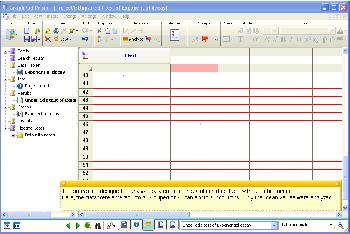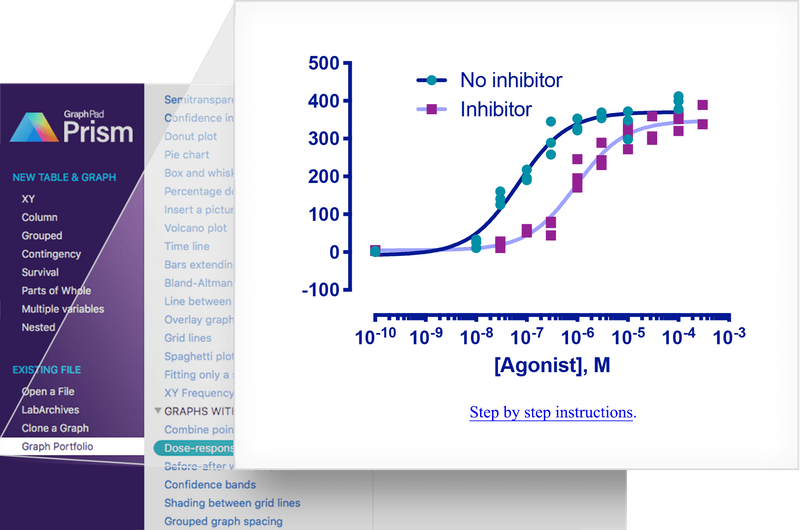

Compare slopes and intercepts of two or more regression lines. Test for departure from linearity with a runs test. Force the regression line through a specified point. Calculate slope and intercept with confidence intervals. Identify outliers using Grubbs or ROUT method. One sample t test or Wilcoxon test to compare the column mean (or median) with a theoretical value. Frequency distributions (bin to histogram), including cumulative histograms. Mean or geometric mean with confidence intervals. Calculate min, max, quartiles, mean, SD, SEM, CI, CV, Compare curves with the log-rank test (including test for trend). Tukey, Newman-Keuls, Dunnett, Bonferron, Holm-Sidak, or Fishers LSD multiple comparisons testing main and simple effects. Two-way ANOVA, with repeated measures in one or both factors. Two-way ANOVA, even with missing values with some post tests.

Calculate the relative risk and odds ratio with confidence intervals. Fisher's exact test or the chi-square test. Kruskal-Wallis or Friedman nonparametric one-way ANOVA with Dunn's post test. When this is chosen, multiple comparison tests also do not assume sphericity. Greenhouse-Geisser correction so repeated measures one-way ANOVA does not have to assume sphericity. Many multiple comparisons test are accompanied by confidence intervals and multiplicity adjusted P values.

Ordinary or repeated measures one-way ANOVA followed by the Tukey, Newman-Keuls, Dunnett, Bonferroni or Holm-Sidak multiple comparison tests, the post-test for trend, or Fisher's Least Significant tests. Perform many t tests at once, using False Discover Rate to choose which comparisons are discoveries to study further. Wilcoxon test with confidence interval of median.

Nonparametric Mann-Whitney test, including confidence interval of difference of medians. Reports P values and confidence intervals. It is also widely used by undergraduate and graduate students. More than 200,000 scientists in over 110 countries rely on Prism to analyze, graph and present their scientific data. Prism is now used much more broadly by all kinds of biologists, as well as social and physical scientists. GraphPad Prism was originally designed for experimental biologists in medical schools and drug companies, especially those in pharmacology and physiology. GraphPad Prism combines scientific graphing, comprehensive curve fitting (nonlinear regression), understandable statistics, and data organization.


 0 kommentar(er)
0 kommentar(er)
